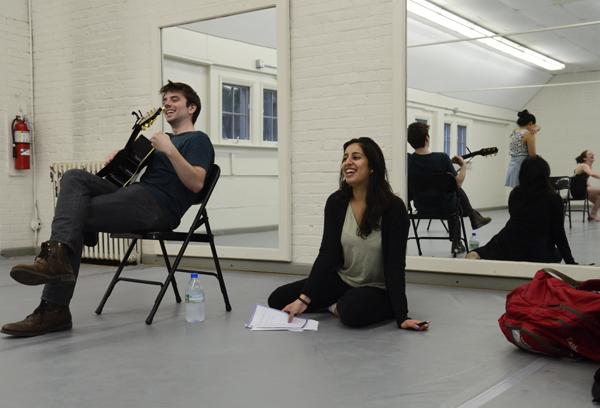Typically little more than a passageway between classes, Kogan Plaza will be transformed into a stage Sunday, if only for 20 minutes.
Senior Komal Thakkar will present her dance thesis, “Mind Like Water,” publicly this weekend in Kogan Plaza, integrating personal choreography with a public space to push people to view a common site in a new light.
“Dance is an art form that is very natural because humans are inclined to move,” Thakkar said. “I think site-specific dance is really thought-provoking because it makes you see a space you may encounter on a daily basis in a new way.”
The Presidential Scholar in the Arts, who has been dancing since she was 5 years old, choreographed the 20-minute piece, which emulates the movement of water, for five GW dancers.
With the public performance, Thakkar and her dancers hope to draw student and community members to the typically more private undertaking of crafting a thesis.
“Because the performance is outside, it’ll be so easy to attract a unique audience who wouldn’t normally be inclined to come to a theater to see a show,” senior Mary Bowlby, a dancer in Thakkar’s production, said.
Thakkar, a former Hatchet reporter, said she was stirred to present the dance because of her fascination with water and its “capacity to take life but also sustain [it].”
To find a spot to incorporate water itself into the performance, the double major in dance and history explored locations like the Georgetown Waterfront and the pier in Old Town Alexandria, Va. before settling on the more accessible Kogan Plaza.
“We often do have site-specific works because our program encourages the exploration of creativity in many forms and venues,” said Dana Tai Soon Burgess, a department chair and associate professor in the Department of Theatre and Dance.
Yet technical difficulties may pose constraints on the dance’s execution. The fountain in Kogan Plaza, which is integral to her piece, is not working, though Thakkar said she believes it will be functioning by the weekend.
Because all of the movements in the dance are based on qualities of water, Thakkar’s choreography has her dancers interacting with the water in the fountain, absorbing it in their hair, clothes and bodies.
“For instance, one of the qualities [of water] is absorption. So the dancers are constantly taking each other’s weight and absorbing that and doing lifts and things,” Thakkar explained.
Thakkar said she and her performers, as well as two GW musicians accompanying the dance, will bring the elements to the plaza even if the technical issues aren’t resolved.
Thakkar could have performed the work herself, but the department supported her choice to present her choreography through other dancers.
“Students can perform in their own work, but the courageous act of stepping out of one’s own work often allows for a clearer view of one’s own choreography because it is unhindered by worrying about the self as performer which is, in many ways, a separate journey,” Burgess said.
This article was updated April 25, 2013:
This story was updated to reflect that Komal Thakkar is a former Hatchet reporter.







